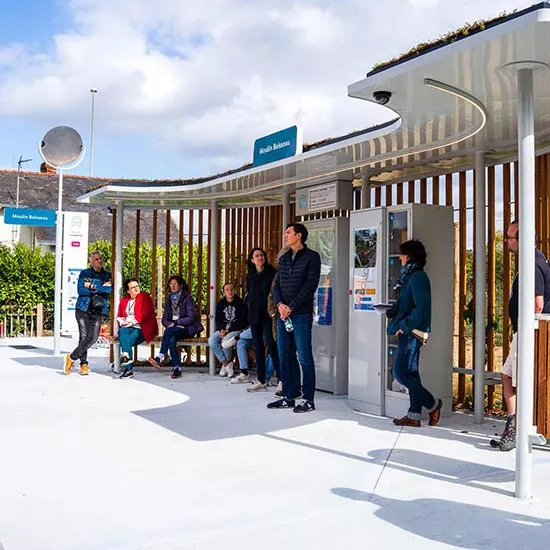Connecting regions across France: Pays de la Loire
Find out how we support several thousand jobs in the region and work with all our stakeholders to make lives better.
We contribute to the region’s economic growth

6,748
SNCF Group employees in 2024

€549m
in purchases made

56%
of our suppliers—478 in all—are SMEs and very small businesses
Actively enhancing quality of life in the region

Developing shared transport in the countryside
Between February 2021 and July 2022, we trialled a driver-operated car-sharing service in the Sarthe department. The aim: make day-to-day travel easier and reduce reliance on private cars. This “Ma Course SNCF” service catered to four types of destinations at a fixed price. Users surveyed reported a high 98% satisfaction rate.

Experimenting with autonomous transport options
PIOMA is our open innovation platform for autonomous mobility. Based in Carquefou, a small town south of Brittany, it was built in 2020 on a disused branch line. We’re using PIOMA to test the technological building blocks of a future automated, driverless public transport system—once again in pursuit of alternatives to private cars for people in underserved areas.
A modern rail network
SNCF Réseau is working hard to make sure rail infrastructure in the region is safe and reliable.
Projects currently underway include:
- Installing fences to keep wildlife off the tracks between Le Mans and Nantes. Funding for the €3.8 million project is split between the French State (58%), the Pays de la Loire Region (23%) and SNCF Réseau (19%).
- Modernizing track on the Thouars - Saumur line at a cost of €3.7 million.
- Modernizing track at Le Croisic station at a cost of €4.3 million.
Expanding Le Mans’ public transport network
The SETRAM public-private partnership has reaffirmed its trust in Keolis by selecting it to provide technical assistance under the contract to operate the Le Mans metropolitan area urban transport network starting 1 January 2026.
Keolis will also be a partner in restructuring the SETRAM public transportation network, focusing on:
- Updating the software system used to manage operations, passenger information and ticketing
- Transforming 3 bus lines into bus rapid transit (BRT) lines
- Extending the length of tram trainsets from 33 metres to 44 metres
- Transitioning the bus fleet’s fuel mix to a combination of biogas, electricity and hydrogen.

Elevating artists to their rightful station
In Clisson station, in the Loire-Atlantique department, non-profit art gallery La Passerelle is using art to bring passengers and locals together. The space was created by the Ya du Monde charity to showcase work by local artists and offer visitors a moment to connect on an emotional level. Gares & Connexions’ Place de la Gare programme—which aims to turn SNCF train stations into spaces where travellers and local residents take care of business and spend leisure time—helped make the gallery possible.
A showcase for local produce
We want our trains to be a showcase for local food producers in every region of France. One example is Beillevaire yoghurt, made from Loire-Atlantique milk.
Click here for the story of this farm-to-TGV yoghurt.
Pays de la Loire : Beillevaire, the train-made yogurt
Promoting rail safety
During the 2023-24 school year, SNCF employees in our IMS outreach programmes taught rail safety to 5,231 school children between the ages of 9 and 18 in Pays de la Loire. Educating youngsters about rail safety is a vital means of preventing accidents and keep kids safe.
Making a place for young people
We work hand in hand with four non-profits to cultivate programmes that help young people—including those with disabilities—find a place in society. These initiatives are a bridge to innovative professions, trades and work that protects the environment. We’re also supporting a project that shows young teens how to reduce food waste and alerts them to risks of overconsumption.
Share the article